By: Thorsten Overgaard. December 26, 2023.
Nineteen years ago, I participated as a volunteer in the relief effort after the tsunami hit South East Asia; Indonesia, India, Sri Lanka, Thailand, Maldives, Myanmar, Somalia, Malaysia, Tanzania, Seychelles, South Africa, Yemen, Kenya and Bangladesh, killing a total of 227,898 people.
When I saw the online news about the tsunami early in the morning on the 26th of December, I felt an unexplainable connection — and that I had to do something about it. This led to me traveling 12,000 miles through South East Asia in January and February 2005, documenting the relief work and the afterlife for the survivors, and then spending the next six months editing and creating what became the “After the Tsunami” project: a book, five slide shows, numerous articles, and public speaking events.
Today's 'Story Behind That Picture' is excerpts from my book 'After the Tsunami,' which is still available as a free eBook download on the website (link at the bottom of the page). The printed version is gone, but it might be reprinted in 2024. (Email me if you want to reserve a copy).
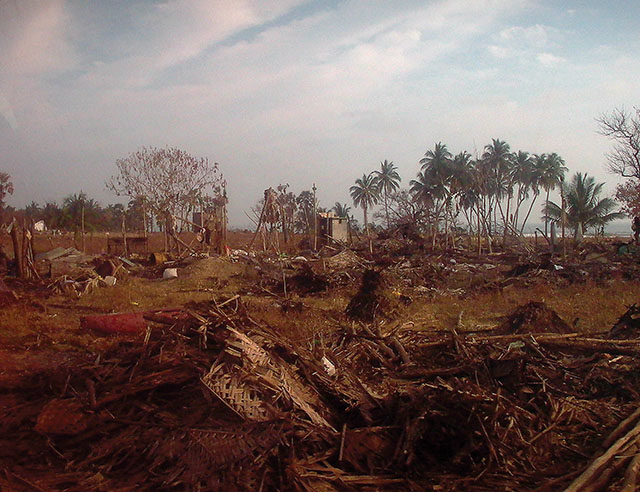
Once a tourist attraction with hotels and local houses in Trincomalee, Sri Lanka. Leica Digilux 1.
"The wrong thing to do is nothing."
That is a quote from L. Ron Hubbard that resonates as a profound truth for me and how I think and how I work.
My two biggest regrets in this life were (and are) that I didn't drive to Berlin the night the Berlin Wall fell and that I didn't go to New York after September 11. In both cases I had a strong urge to go, but something in me said, "be sensible."
We all carry an urge within us to reach out and do something, as well as a voice urging us to be sensible and behave as if everything wrong is somebody else's problem.
In the instance of the tsunami in South East Asia my urge to reach out and help conquered all my fears of strange diseases, pictures in my mind of dead bodies floating in a sea of chaos and a generally low knowledge about Asia and the people living there.
496 Scientologists from all over the world as well had that strong urge to reach out and help their fellow men. Strong enough to have them arrive in Asia. To them the After The Tsunami project is dedicated.
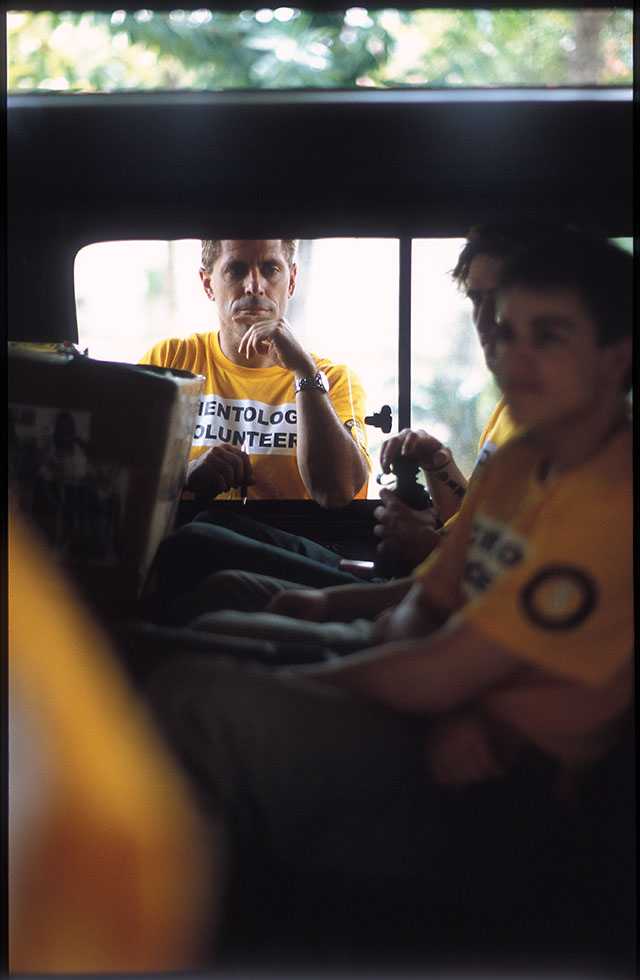
Mr. Loumeau (from Los Angeles) sending off a team and medical supplies to Trincomalee in Sri Lanka. Leica R8 with Leica 80mm Summilux-R f/1.4. © Thorsten Overgaard.
As a volunteer from Los Angeles said "Home in LA they [asians] were just somebody living on the other side of the highway. I never talked to any, nor knew their problems in life. Now I know many people here with whom I have personal relations. People I have helped and who will be my friends for the rest of my life."
If you think about it for a while, isn't it strange that a person from LA travels to Asia to help? When in the middle of it, the answer to the question "What are we doing here?" is quite obvious. When in Asia, being able to help people in a crisis like this - there is no more important thing to do in life.
As Herbert, a real estate agent from Germany said after he had been in Sri Lanka for two months: "I left my real estate business just after New Year and came here. Both my wife and my partner in the real estate business understood and support me. My partner takes care of business while I'm here. He has to. As long as there is somebody here I can help, I'm staying."
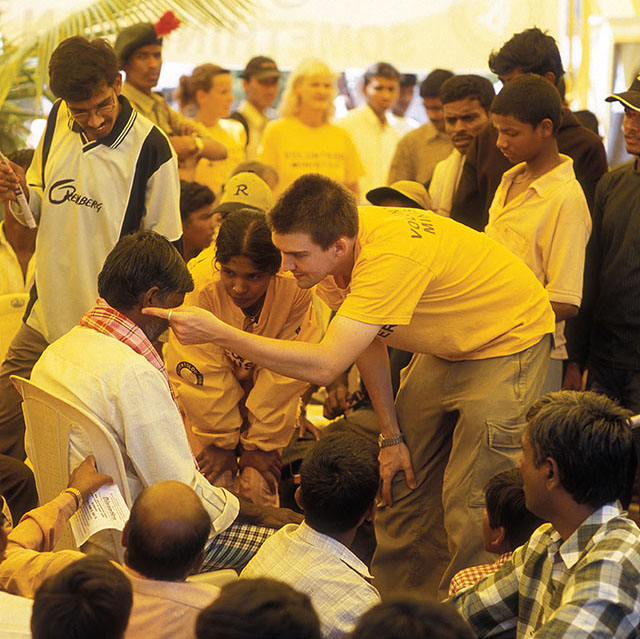
Mr. Scandrett (United Kingdom) from the Scientology Volunteer Tsunami Relief Team deliver a Scientology "Touch Assist" to an indian man at the Suttor Religious Festival in India. Leica R8 with Leica 80mm Summilux-R f/1.4. © Thorsten Overgaard.
Part of the story is that every single person on the Scientology Tsunami Relief Team have not only uprooted their life, income and whatever projects they were in the middle of at home. They have also paid the cost of their flight ticket themselves. And they continue to pay the costs of their daily expenses; approximately $26.00 per day that goes to a bed, some food, transportation and telephone cards necessary for internal communication between teams.
| |
|
| |
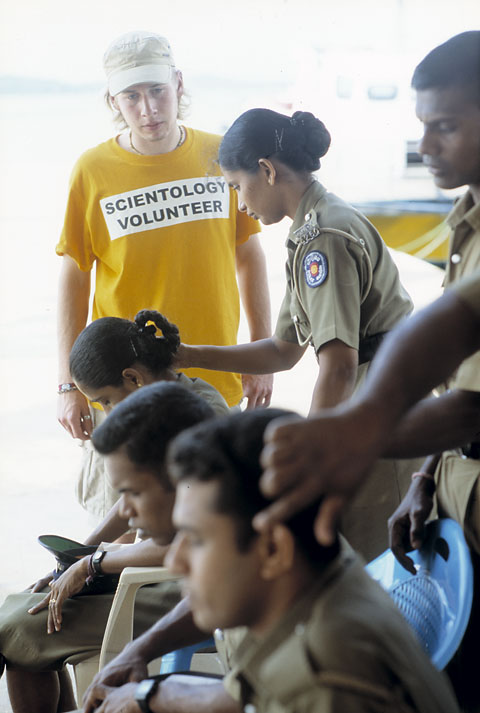 |
| |
A Scientology Volunteer supervises staff of the Harbor Police in Trincomalee, Sri Lanka. On request from the police chief the Scientology Volunteers trained most of the police and military staff in the North-East Sri Lanka. |
| |
|
From Denmark five people arrived: A acupuncturist, a millionaire, a workman, a student and I. That's quite a varied cross section to find among just five people. At the same time in Denmark about three staff in The Church of Scientology worked full time to provide support and back up to the five of us who would be working in the field. Each country had a similar picture; a variety of people arrived and back home a number of staffs in the churches and among parishioners worked to back up the activities, making sure that friends and family at home got daily updates on what was happening in Asia.
The first Scientology Volunteers arrived from Australia and New Zealand within 48 hours after the tsunami. The first three Danish volunteers arrived to Sri Lanka the 4th of January 2005 along with 23 Germans.
The first ones set up a base in Colombo, the capital of Sri Lanka, and started finding out what was needed. They spoke with the ministers in Colombo and then sent out teams to Trincomalee in the North East and to Galle in South. From them we learned the nature of the work that had to be done.
In the beginning it was administrative contacts to various officials in Sri Lanka. The mayor of Galle was literarily crying for help for his devastated city. That's why the volunteers set up a large yellow tent as a base on the grass in front of the City Hall in Galle where it stayed for the next many months with the UN building towering on the opposite side of the street.
A team of Italian Scientology Volunteers built a tent village of hundreds of blue military tents they had persuaded the Italian government to donate. A German engineer supervised local workers on clearing a field and leveling it out for the tent base in 24 hours.
Swiss volunteers worked for a couple of months with American military and Australians on removing the remains of wrecked buildings along the coastline of Galle.
As the mayor of Galle later stated: "There was no other person, no other institution who walked in. The first to walk in was the Scientology Volunteer Team. And they came with a purpose, in good faith for our people."
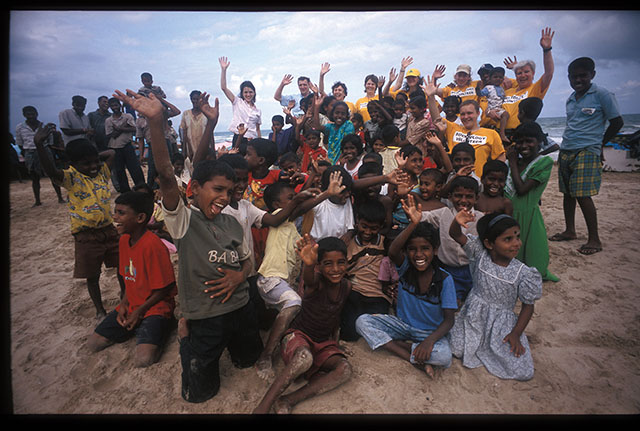
The children in Trinomalee in Sri Lanka where the families lived in temporarily tents and cottages after the tsunami that hit on December 26, 2004. Many of the kids were afraid of the ocean now, and the Scientology Volunteers helped the kids get in contact with the ocean gradually through plays and games. Leica M4 with Leica 21mm Super-Angulon f/3.4. © Thorsten Overgaard.
In Trincomalee one Danish and one German volunteer took a walk the day they arrived to see what was most needed. The volunteer reported back later that day, "Send 1,000 volunteers more, they need help in every regard." Because of the civil war in Sri Lanka - Trincomalee is next to the "border" to the Tamil Tigers in North - thousands of land mines were unearthed and misplaced by the tsunami. Usually land mines would lie outside towns as a barrier against attacks. Now landmines could be anywhere; one more aspect of the catastrophe to consider amongst the many.
The friendly people of Sri Lanka would invite volunteers to their homes - if they still had one, else they would invite them to the place where it once was - and show them pictures of their lost babies, parents, sons and daughters. Some would show videos of how the tsunami hit the town and the volunteers would look at people crying for help, dead people, trees and cars being pushed by the wave and heavy concrete buildings falling like paper. "Look, there's my mother," the Sri Lankan would say, pausing the video to point out one helpless person amongst many in the wave.
I personally must admire the volunteer's coolness in organizing the relief work. Yes, they cried. But then they thought ahead. There was - and is - so many things you could do. Trincomalee serves as a good example of effective organization. The two volunteers arranged things so that 20 people from each tent camp in the area would learn how to help their fellow men and how to teach them to help as well. In this way thousands and thousands of Sri Lankans received help and also learned how to help others.
This system is so wise and effective you must applaud it.
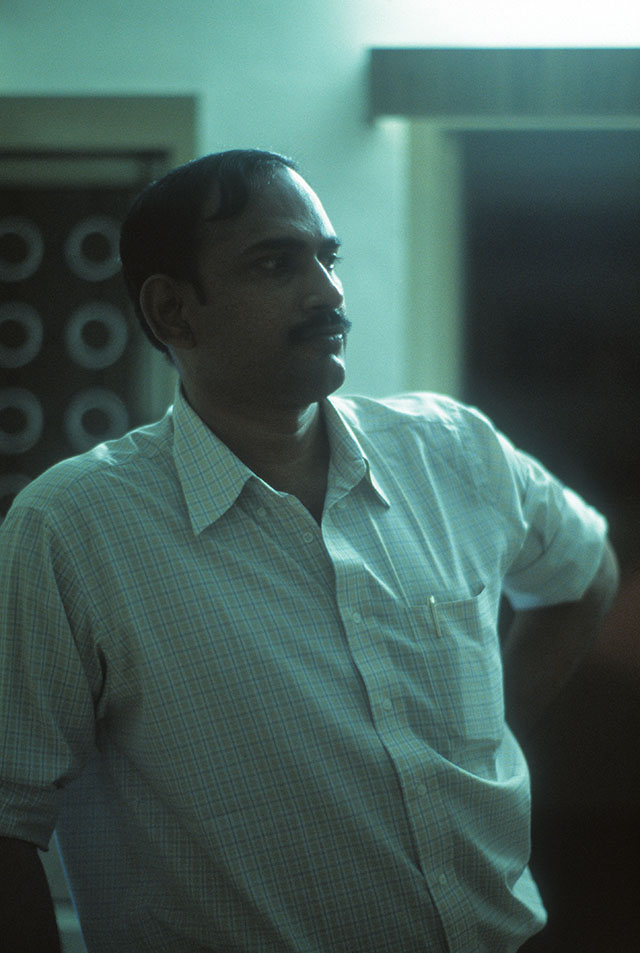
In Madras in India I met a sound engineer who worked in Bollywood. He had housed a lot of Scientology Volunteers and Buddhist monks when they arrived to help. "I know nothing about the philosophy behind Scientology but I like the scientologists, every one of them I've had contact with here has been straight, each and every one. And they work, work and work all the time helping the victims from the tsunami. I think Scientology will achieve a fantastic reputation here in India over the next ten years or so. They are really nice people and I like them a lot." . Leica SL mot with Leica 80mm Summilux-R f/1.4. © Thorsten Overgaard.
If the 496 Scientology Volunteers had worked day and night for a year they would not have been able to produce the same result as they did in a month with this strategy. The Scientology Volunteers helped 250,000 people with mental relief in two months while in the same period the Red Cross helped 750,000 with food, water, tents and first aid.
The techniques applied by the Scientology Volunteers are ingenious therapies designed to raise people's emotional state. It might be hard to realize, but the government of Sri Lanka could deal with the physical damage from the tsunami. In much of the country the waves had only penetrated 500 meters inland (the South and the East coast). Most of the country's infrastructure lay beyond the reach of the waves and remained intact and could be used to get supplies to the affected coastal areas. What the government seemed completely unprepared to handle were the mental and emotional impact on people living in the affected areas who had survived, as well as people in the rest of the country who lost friends and family.
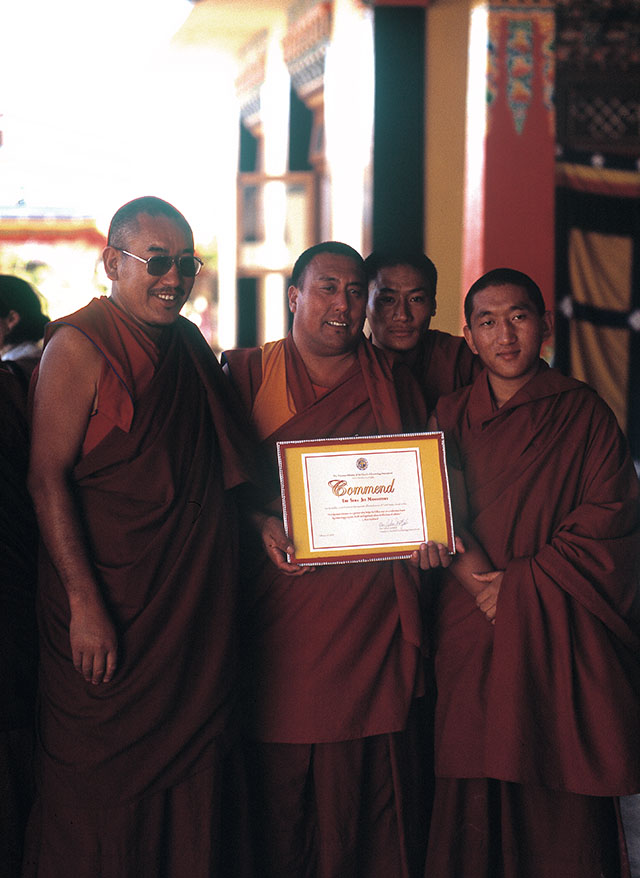
Tibetan Buddhists of the Dalia Lama Monastry at the Sera Jey Monastic University in India made a commendation for the Scientology Volunteers who had trained thirty of the monks who then went with the Scientology Volunteers to Nagapattinam to help tsunami victims. Leica SL mot with Leica 80mm Summilux-R f/1.4. © Thorsten Overgaard.
When you met a Sri Lankan he would smile and go to great effort to make you comfortable. It lies in their whole philosophy - and the Buddhist philosophy - that helping others is more important than helping yourself. To the casual eye a Sri Lankan may seem okay and in control despite having lost half his family, his house and his boat. Truth be told, he was more like one of the living dead who just sat there amid the ruins, didn't eat, couldn't sleep and didn't provide food for his family. In other words; apathy.
 |
|
| |
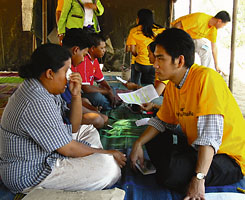 |
| |
(Photo by a volunteer) |
| |
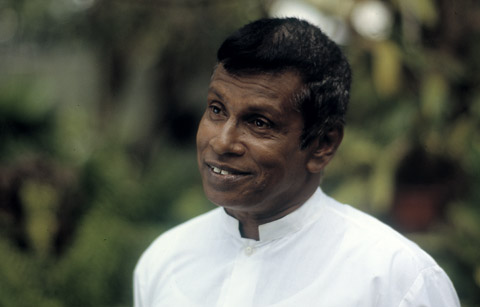
Dr. Walther, an acupuncture doctor in Colombo, Sri Lanka:
"When we, the Sri Lankan people, are in need, we go by the Scientology Volunteers. From south to north, they cater not only the materialistic needs but also – and actually more importantly - the spiritual needs. Many help organizations are doing things but I noticed that the Scientology Volunteers are also doing many other things such as educational, health, spiritual and more.”
|
But when you started to help that person, he would crack up, start crying, see how hopeless his life was and then - thanks to the simplicity of the Assist technology - he would get better and better to a point where he smiled, realized his losses were part of yesterday and that life can and must continue from this point forward.
If somebody can help you to look at it and point you to a future life as happy as the one you had before the tsunami, you have been helped beyond what you thought was possible. And that was what the Scientology Volunteers were able to.
It was the same role the Scientology Volunteers played after September 11, 2001 in New York. 220 Scientology Volunteers helped the rescue workers overcome the hopelessness they felt after hours of looking for survivors with no sleep, food and water. Back then Red Cross again provided food, water and shelter. The Scientology Volunteers provided mental relief. Restored hope and will.
When you are able to help yourself rebuild your life, things become less complex and you see solutions. You get into action. Then you don't sit around waiting for something to happen, you don't have to commit suicide and you don't have to wait for the government to help. You can do something about it. Which was exactly the point.
As you may recall, the Sri Lankan government, as others in the affected area, said "we have the situation under control, don't send more people. Just send food and money" - or whatever the exact wording was.
Another cultural factor is that Sri Lankan - and Asian peoples - are proud people. I must confess I thought they needed help to figure things out and organize stuff. But what I learned is that even the smallest Asian man turned out to be a bigger person in may ways than most western people I know.
They appreciated our help - many people we met on the streets stopped us to thank us for being there and for our efforts - but they resent western, often materialistic, people coming to their country and try to run things, tell them to change their religion, eat pills to be happier about the tsunami, paint their houses in some trendy colors and what have you. What they wanted was help and support to help themselves come back to the life they have been living for thousands of years in harmony with nature and their soul.
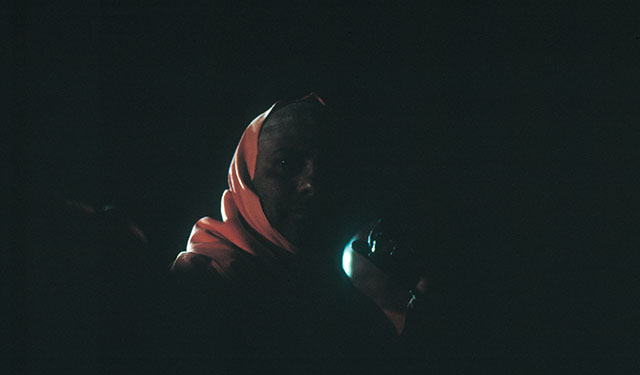
His Holyness, Sri Shivarathri Deshikendra Swamiji at the Suttur Religious festival 2005. His Holiness is the curent head of a religious tradition that has lasted for more than a thousand years in India. He had seen and heard what the Scientology Volunteers had done to help the survivors of the tsunami and asked them to set up a Goodwill Tent at the relivious festival, and invited them to stay at his home, the ashram. © Thorsten Overgaard. Leica SL mot with Leica 80mm Summilux-R f/1.4. © Thorsten Overgaard.
Driving to the airport for my trip home, I looked at the worn out houses along the road. Cottages with rusty metal roofs, worn out cars from god-knows-what-century and the endless dust and dirt that seem to stick to anything and anybody. That was when I started to appreciate the true nature of Asia. These people are spiritual beings who live to help others and to become better and more decent people tomorrow, next year and in their next life. They strive upwards spiritually by Dharma (which is Morale, Concentration and Knowledge).
I would be traveling home to my western world where we live in nice and perfect constructed houses but with very little knowledge as to what life is and with no real answers to life's big questions. Questions every kid in Asia seems to know the answer to.
Asia might have lost a lot of buildings and people but they definitely didn't loose their soul.
Sri Lanka is 95% or more Buddhists. Perhaps 1% or 2% don't have any religion. But almost everybody has a religion they actively adhere to. You would see tuk-tuk drivers [taxis] decorating their tuk-tuk's every morning with fresh flowers to praise their religion. Others would stop by the synagogue, monastery or church several times a day to praise their religion. Others would just live by their religious code as best they could. But very few did not believe in anything. It would be an insult telling these people their religion was wrong by trying to convert them.
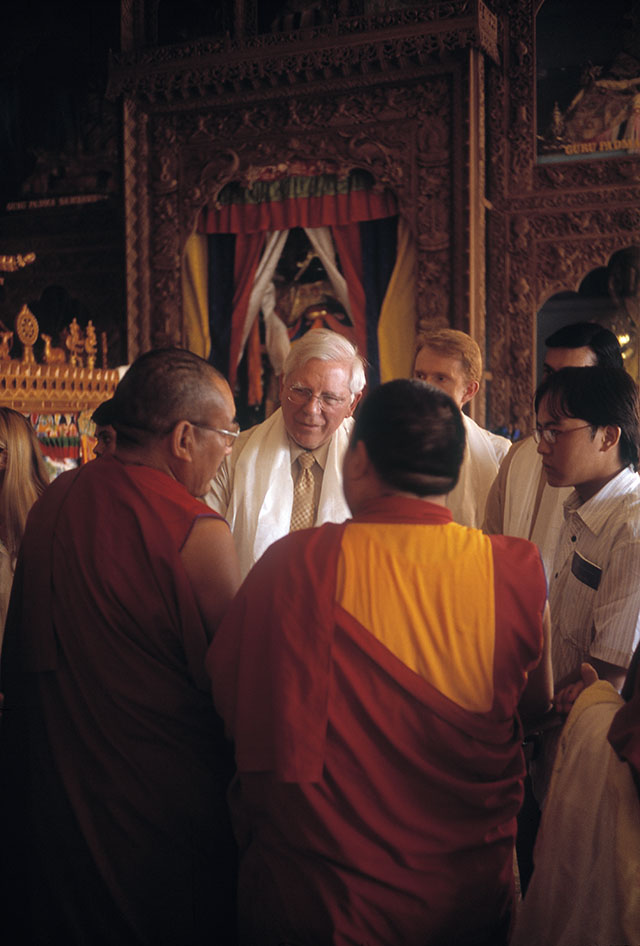
President of thre Church of Scientology
Heber Jentzsch traveled Indian and Sri Lanka to meet with government, religious leaders and work with the Scientology Volunteers on ground. Here on a visit to the Tibetan Buddhist monastry of Dalia Lama, Sera Jey Monastic University. Leica SL mot with Leica 80mm Summilux-R f/1.4. © Thorsten Overgaard.
The Scientology religion doesn't espouse any particular explanation or description of God. Muslims, Jews, Christians, Buddhist or anybody are welcome to use Scientology to become better Muslims, Jews or whatever. The purpose for going to Sri Lanka was to help: Therefore the word "minister" and the Scientology cross were omitted on the shirts worn by the volunteers working in Sri Lanka to avoid any confusion as to what their intentions were.
Numerous people and organizations have helped and was helping for many months in Asia. In Sri Lanka for example 2,500 US Marines cleared roads and rebuilt bridges for two months. I saw UN cars in Colombo and Galle and US AID t-shirts on 100 locals who were cleaning up bricks in Galle.
Ironically, one also occasionally sees a full blown, Madison Avenue advertising film crew replete with klieg lights, Panavision movie camaras, directors chairs, assistants, and French chefs working the catering wagon while dozens of people are standing around wearing sunglasses – right next door to acres of tents packed with tsunami survivors. Let's hope the commercial being filmed raises lots of aid money.
Help come in many forms.
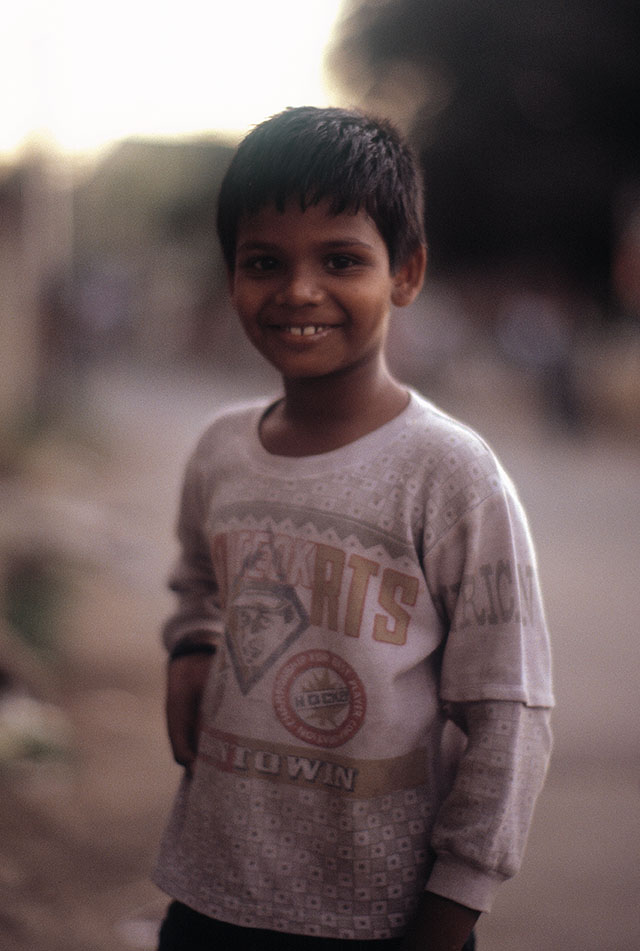
Madras, India (now Channai, India). Leica SL mot with Leica 80mm Summilux-R f/1.4. © Thorsten Overgaard.
One of my reasons for going was, as I said, to help in any way I could. But I also wanted to learn for myself what was really going on. On one hand the Red Cross announced that they didn't need more people in the affected areas. Yet the Scientology Volunteers on the ground reported that they could use all the help that could get there. Contrary information that just didn't add up. I wanted to find out what was going on for myself and I wanted to let others know. I wanted to document and report things as they were - especially the good things, because the bad things had been reported so extensively, we all felt we could be hit by a tsunami any moment.
That was about as clear - or vague - as my concept was when I left Denmark. I followed the advice from Volunteer Ministers International headquarter in Los Angeles as to what personal equipment I should bring with me. And then I arrived in Colombo, Sri Lanka with that stuff plus five of my Leica cameras and 100 rolls of slide film. I might get time to take pictures, or maybe I would work day and night helping people out of ruins. I had literary no idea how this would turn out.
The actual scene was much different than what I had expected. It wasn't a chaotic war zone as the pictures I had seen suggested. It is obvious that even with the loss of 30,000 lives, in a country with a population of 20,000,000 people, the whole country would not be covered with corpses and ruins.
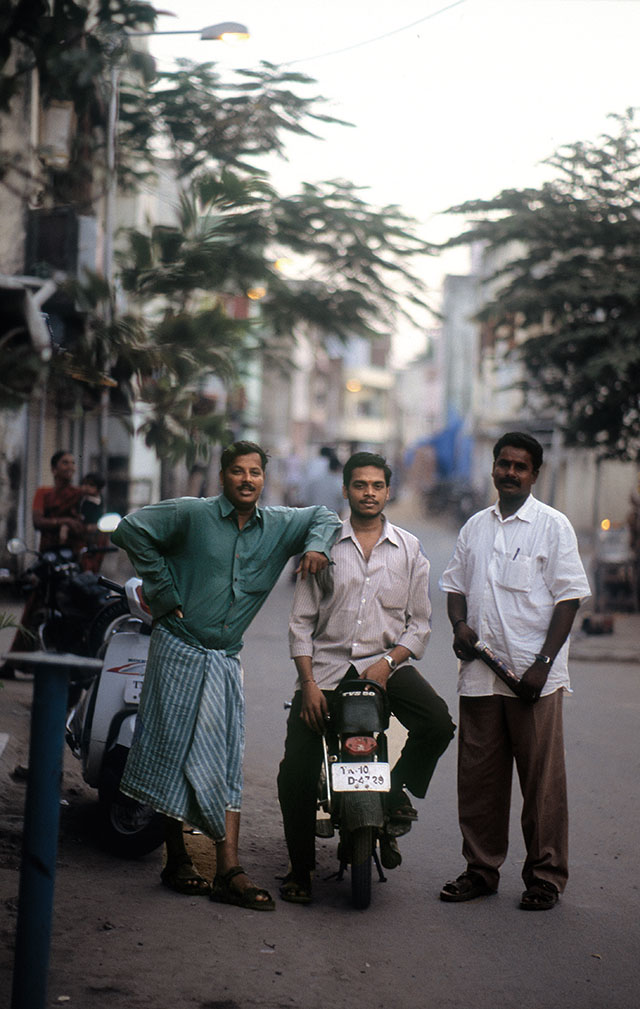
Madras, India (now Channai, India). Leica SL mot with Leica 80mm Summilux-R f/1.4. © Thorsten Overgaard.
Along with the five people I arrived with, I went to the Scientology Volunteer headquarter in a sports hotel near the Olympic stadium. I was assigned to a 6 person room with six beds, one closet and a shared bathroom that only had cold water located 25 meters away in another corner of the hotel. After two other Danish guys and I had bought cleaning equipment we cleaned the bathroom and shower room so that we would avoid bacterial infections or similar horrors. I had heard terrifying stories about what exotic diseases could do. Some hours later we sat down with the Scientology Volunteers and ate rice and eggs. The only food they could recommend. "Stay away from meat," they advised, "if any, only eat chicken because that is killed fresh before it's cooked. Other meat lies out in the heat for days."
After many hours traveling, adjusting to a different climate, new sounds, the smell of gasoline in the air and different foods, we went to bed to be eaten by mosquitoes during the night. I had about 20 bites in the morning and that was when I decided I was now adjusted. There were so many new things to be afraid of that I just decided to stop torturing myself and just get on with whatever work was needed.
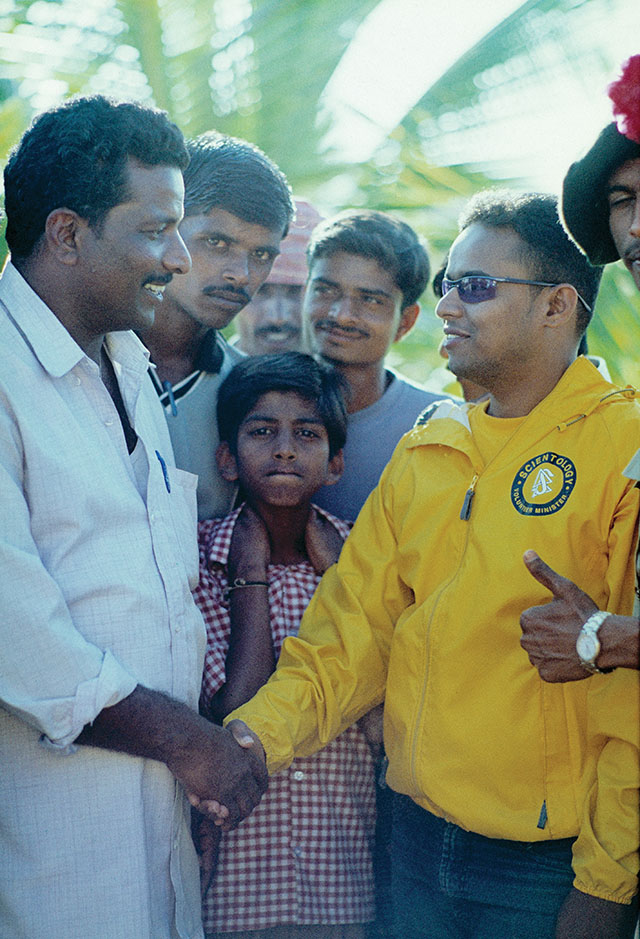
Mr. Jenyairyju was very happy and wanted to say thank you to the volunteer for helping him with breathing problems, chest pain and pain in the back. Suttur, Mysore, India. Leica SL mot with Leica 80mm Summilux-R f/1.4. © Thorsten Overgaard.
The first thing that was needed was to gather up and organize all the digital pictures the different volunteers had shot with their digital cameras. There were 8,000 in total and after spending a day collecting, cataloging and sorting through them on my laptop, there were about 100 shots that were ok and conveyed some kind of story or message. These I categorized with captions, dates, etc. and sent them on to the Scientology Volunteers International in Los Angeles. The remaining 7,900 digital photos on my laptop were group shots, funny shots or typical touristy snapshots. But very few of these pictures were taken for the purpose of showing the world what the post tsunami scene was here and how help was being provided.
That was at the point I decided I would indeed devote a great deal of my time photographing and documenting the volunteer work. It was clear to me that it was a worthwhile effort to ensure that the story of the wonderful work of the volunteers in Sri Lanka and elsewhere would not be forgotten.
And that was what I worked on most the time. I joined up with Chrisztina from Hungary who were there as videographer. We were both looking to document the same scenes, people and shots - plus volunteers were only allowed to travel in pairs for reasons of personal security.
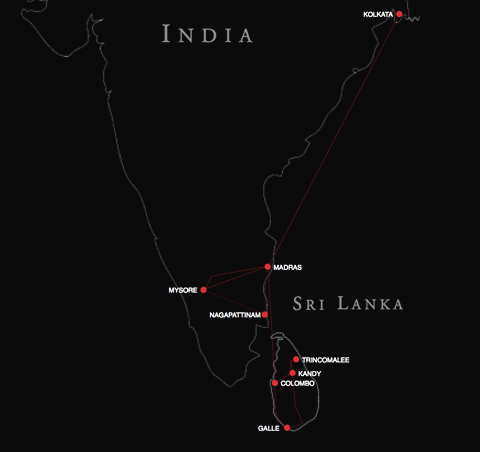
I went to all these locations to photograph and observe first-hand, and then spent the next six months scanning, editing photos and writing.
The two of us traveled across Sri Lanka North to South, East to West, then went to India where we traveled for some time before we traveled back to Sri Lanka where we wanted to get a first-hand look at the scene, as well as travel with Alissa Sears who met with religious and political leaders to organize help. In the last few days, while organizing tickets home, we captured whatever last shots we felt we had missed, then headed home.
My wife was furious when I came home. It turned out that our email had been down for two weeks, but she hadn't realized it. She just thought I had stopped writing and was either dead or had left her for one or more Asian woman.
After restoring the marriage with silk dresses from India and the usual supplications for mercy I could resume work on the tsunami relief. Which first and foremost consisted of looking through the 3,300 slides I had taken and decide which were good enough to be scanned for use on web pages and in print. I had deliberately taken mainly film cameras and only one digital, which meant high quality and a lot of extra work.
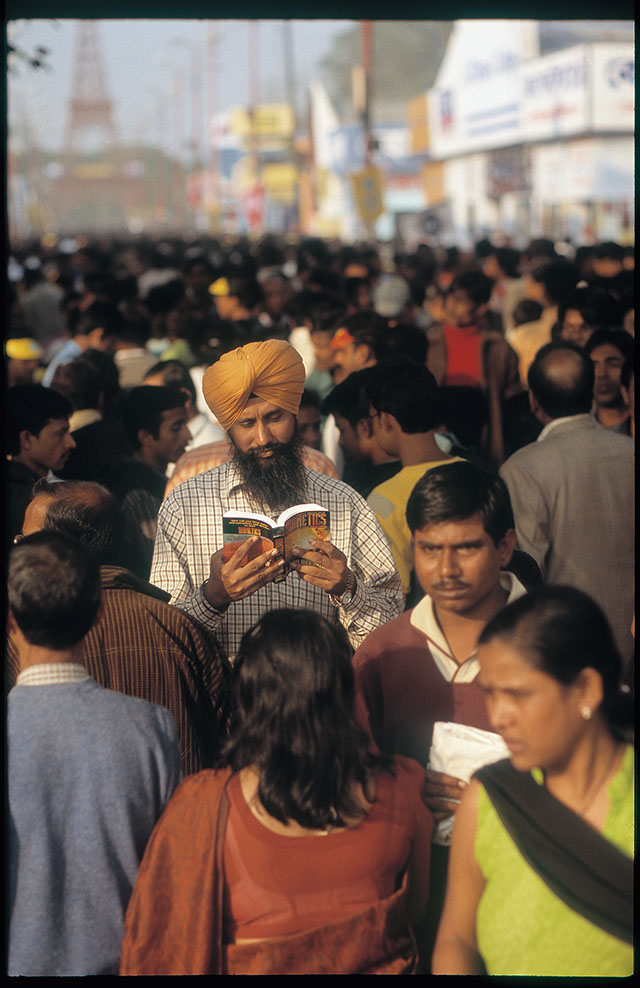
Mr. Jagdish Singh from Kolkata reading Dianetics by L. Ron Hubbard at the Kolkata Book Fair 5th February 2005. Leica SL mot with Leica 80mm Summilux-R f/1.4. © Thorsten Overgaard.
One of the secrets of professional photographers is that they take a lot of pictures. I had expected 10% of my shots to be worthy of scanning. It turned out there were about 1,100 which I felt had value for some kind of use. Whenever I saw a water truck from UNHCR or a tent from US AID I shot pictures to send to them. Now all these needed to be scan, categorized and annotated with data such as the names of the people pictured as well as the places and dates for future use.
It is time-consuming. Even operating in a highly organized and efficient routine, each picture is about 20 minutes of work. A news photo is typically processed in minutes and then it's gone. I felt that my shots were for history, magazines and such. I really had not figured out how I would use it yet, except I would let the Volunteer Ministers use as many pictures they wanted. This would be my donation to the project. Many volunteers have donated months of their lives to this. The terms were the same for me.
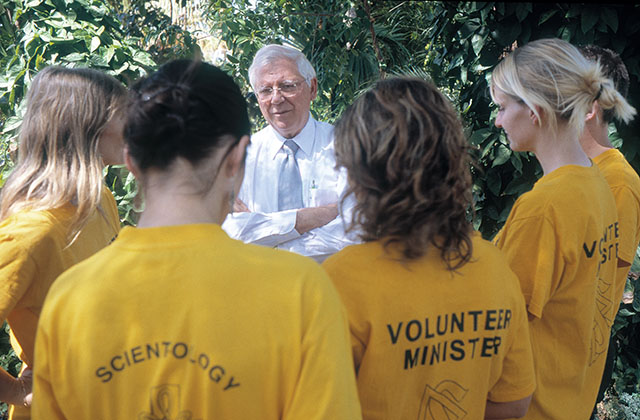
President of thre Church of Scientology
Heber Jentzsch with the Scientology Volunteers on ground. Leica M4 with Leica 21mm Super-Elmarit-M f/3.4. © Thorsten Overgaard.
Call me naive but I soon learned that nobody was going to drop what they were doing to take on a project of the scope warranted by this large collection of pictures. If I wanted to make sure the stories behind these images were not lost, I would have to take the project all the way to completion and provide a finished product that others could view and understand.
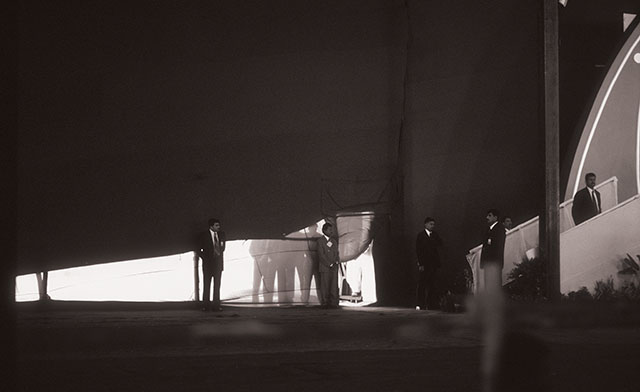
I was there too: The Indian Prime Minister is speaking at the Suttur Religious Festival while his bodyguards watch the exit to the helicopter outside the tent. © Thorsten Overgaard.
I sent out collections of pictures to all magazines I thought might be able use them. I learned how to create a slideshow that ran to music and burned it to DVDs, which anyone could run on their home DVD player. And then came the idea about the book. It popped into my head while I was there. I know that many travelers have thought their time in Asia to be so packed with miracles and wonders that they had to write a book and I am the first to admit to feeling the same. Thus I was very disappointed in myself when I quickly gave up keeping the necessary notes for a book. I mean, we were all down to just two to five hours of sleep a night already. Who had the energy to take notes.
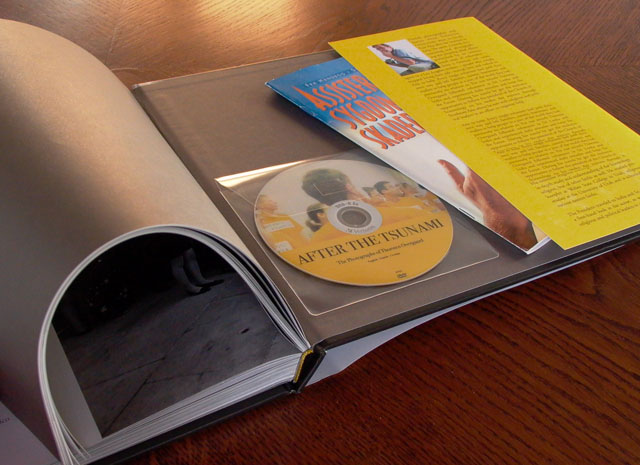
The book "After the Tsunami" with inserted DVD.
I've created brochures, pamphlets and newspaper stories based on my pictures and experiences. When I came home, I regretted I hadn't taken any pictures that truly captured the scope of the disaster. In Galle I could have taken a great shot of a sad man standing in the midst of one square mile of devastation. At the time I felt there was no worthwhile purpose to these types of pictures, that they were too negative. So I never took that shot. Now sorting through the thousands of pictures I did take, I regretted it. But then my wife said something wise. We had all seen those types of pictures and videos repeated again and again, all over the media. There was absolutely no reason to show still more. People need to see what else happened. There were hundreds of examples of miracles and hope and the indomitable spirit of the Sri Lankan and Indian peoples and the marvelous work of the volunteers cannot be denied. And I have pictures that show happiness and hope amidst the disaster. That's the real truth documented here.
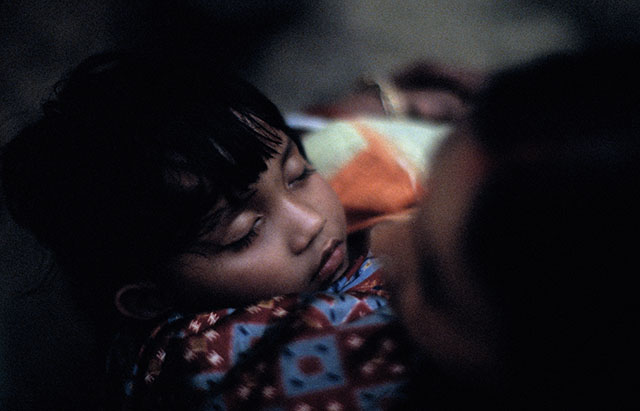
A child sleeping with his mother (Kolkata, India). Leica SL mot with Leica 80mm Summilux-R f/1.4.
I hope this The Story Behind That Picture has helped you to understand what happened in South East Asia and I hope you will go there someday to experience Asia for yourself. Each of you who've read this book should realize that you have helped the people of Asia in some form or another. It does not matter if your help was thinking of the families there or if you donated $2 via your mobile phone or if you spent a year as volunteer. In any way or form you have helped, I know the wonderful people of Asia appreciate it tremendously.
I think that what I gained from this experience, and what resonates with me still today, is the knowledge that we all have within ourselves: that we are all human beings. Only when somebody can break down and segment out of the human race a whole race, can you get anybody to fire a gun. All wars have to start with the assumption that is given to the basic populace: that they are not fighting the human race.
For more on this story, grab the free eBook below, and visit afterthetsunami.org

Thorsten Overgaard
thorsten@overgaard.dk
| |
|
|
|
|
| |
|
|
|
|
| |
"After the Tsunami"
as free eBook

Simply order here and use the code "FREE" on checkout and it is free today. |
|
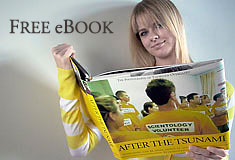 |
|
| |
|
|
|
|
| |
|
|
|
|
More to come
Bon voyage with it all. Sign up for the newsletter to stay in the know. As always, feel free to email me with suggestions, questions and ideas. And hope to see you in a workshop one day soon.
Bonus: The slideshows
This is one of the slideshows made for the After the Tsunami project. For this one Pan American offered their soundtrack for free. For other of the slideshows, Bugge Wesseltoft, Kruder & Dorfmeister and more offered their music of free.
The Volunteer Ministers
The Scientology Volunteer Ministers have been working as an international team of volunteers for more than thirty years. For 9/11 in New York, 800 volunteers worked for months on the scene, providing support and help. Anybody could, in theory, be a volunteer, but mostly it is parishioners of the Church of Scientology that follow the pattern I saw in South East Asia: They drop what they have in their hands and fly out to help where it is needed. For the Hurrican Katrina 900 volunteers arrived, for the Haiti earthquake, volunteers from 22 nations flew in with medical supplies, food and stayed to help, and for Nepal Earthquake, Japan earthquake, etc the pattern has been the same.
For the Photographic Interested
You may also visit the "behind" page where I tell more about the cameras I used, and how I worked with slide film and editing scannings from my Imacon and Nikon scannes.
Below my notebook for film rolls I uused throughout India and Sri Lanka, noting technical details, as well as people and places for reference whan back developing, scanning the slide film and keywording photos.
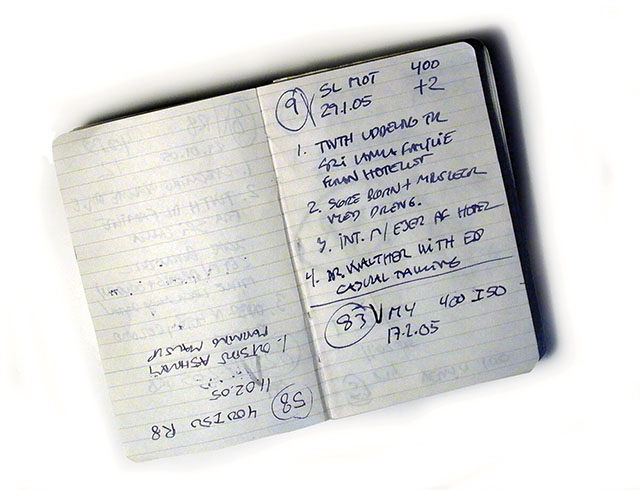
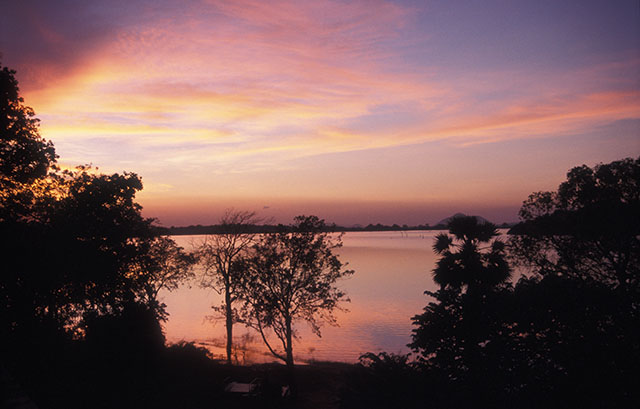
Sunset in northern Sri Lanka. Leica R8 with Leica 35-70mm Vario-Elmarit-R F/4. © Thorsten Overgaard.
| |
|
|
|
|
| |
 |
|
| |
|
|
|
|
| |
"Photography is simple"
Thorsten Overgaard is one of the best to explain in simple terms how cameras works, and how to get excellent results.
Be competent. Buy and study this easy-to-use video class that explains how to get focus right, what sharpness is, how to get the exposure and the colors right, and more ...
"Easy to apply, photography finally told so everyone can become an expert user"
Normal price $498.00
Explained by Thorsten Overgaard by using Leica Q2, Leica SL2, Leica M11, Leica M10 Monochrom, 35mm film cameras, Leica Digilux 2 and more. |
|
Thorsten Overgaard's
"Camera Excellence Class"
For Computer,
iPad, Apple TV and smartphone.
Normal price $498.00
Only $198.00

Save $300.00
USE CODE: "COXY66" ON CHECKOUT
Brand new. Order now. Instant Delivery.
100% satisfaction or money back.
More info
Item #1847-0323
Released April 2023
|
|
| |
|
|
|
|
![]()
